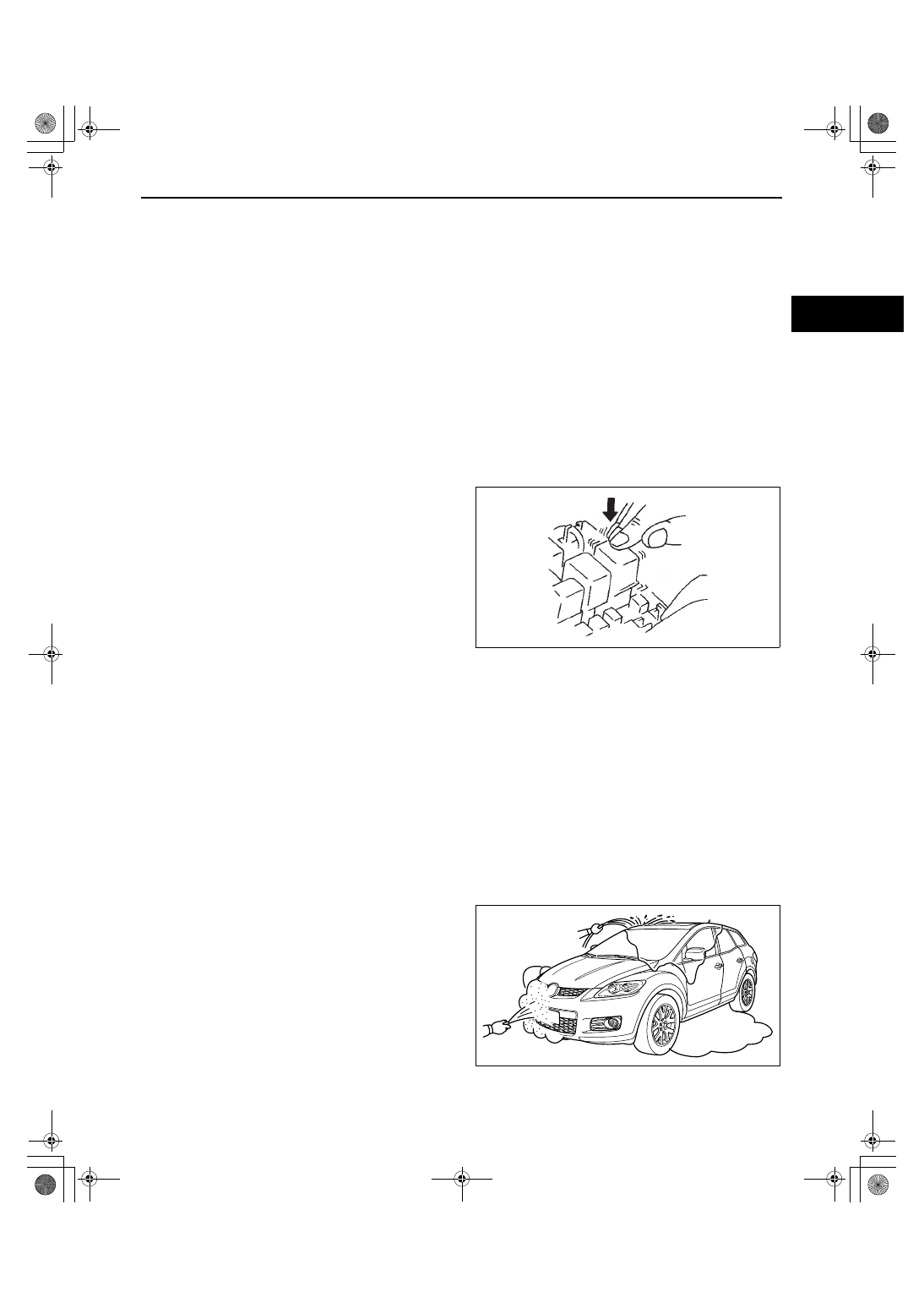Mazda CX 7. Manual - part 95

SYMPTOM TROUBLESHOOTING [L3 WITH TC]
01-03–77
01-03
Inspection Method for Sensors
1. Connect the M-MDS to the DLC-2.
2. Turn the ignition switch to the ON position (Engine off).
Note
• If the engine starts and runs, perform the following steps during idle.
3. Access the PIDs for the switch you are inspecting.
4. Shake the sensor slightly with your finger.
• If the PID value is unstable or a malfunction occurs, check for a poor connection or a poorly mounted
sensor or both.
Inspection Method for Actuators or Relays
1. Connect the M-MDS to the DLC-2.
2. Turn the ignition switch to the ON position (Engine off).
Note
• If engine starts and runs, perform the following steps during idling.
3. Prepare the output state control function for actuators or relays that you are inspecting.
4. Shake the actuator or relay with your finger for 3 s
after the output state control function is activated.
• If a variable click sound is heard, check for a
poor connection or a poorly mounted actuator
or both, or the relay.
Note
• Shake the relays too strongly may result in
open circuits.
Water Sprinkling Method
If a malfunction occurs only during high humidity or rainy/snowy weather, perform the following steps:
Caution
• Indirectly change the temperature and humidity by spraying water onto the front of the radiator.
• If a vehicle is subject to water leakage, the leakage may damage the control module. When testing
a vehicle with a water leakage problem, special caution must be used.
1. Connect the M-MDS to the DLC-2 if you are inspecting sensors or switches.
2. Turn the ignition switch to the ON position (Engine off).
Note
• If the engine starts and runs, perform the following steps is idling.
3. Access the PIDs for the sensor or the switch if you are inspecting sensors or switches.
4. If you are inspecting the switch, turn it on manually.
5. Spray water onto the vehicle or run it through a
car wash.
• If the PID value is unstable or a malfunction
occurs, repair or replace parts if necessary.
End Of Sie
acxuuw00002368
acxuuw00001941
1871-1U-06B(01-03).fm 77 ページ 2006年3月15日 水曜日 午前10時36分